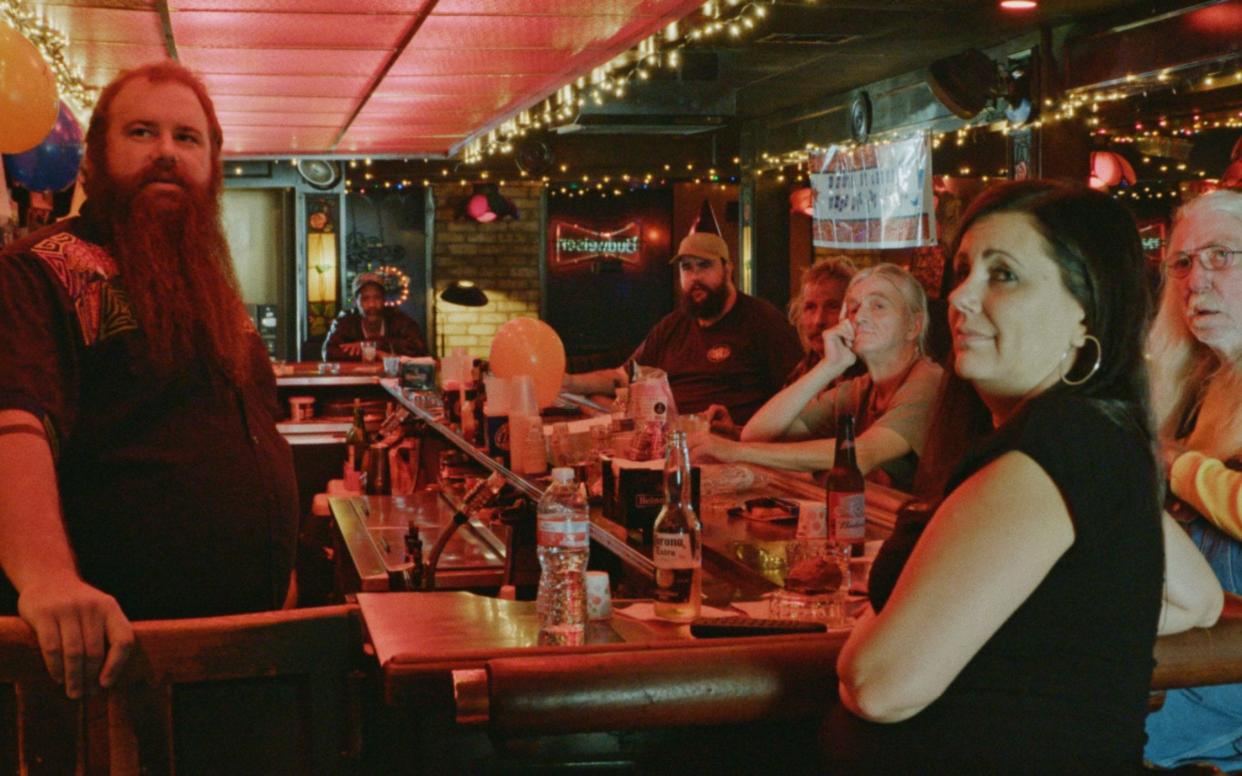Why we are drawn to the most unlikely and ordinary documentary stars

No description of the documentary Bloody Nose, Empty Pockets makes it sound particularly intriguing. The film – which observes a group of down-and-outs over one night in a dive bar in Nevada – sounds pedestrian on paper. Who wants to sit and listen to the drunken talk of others when you yourself are sober?
Yet, audiences and critics at this year’s London Film Festival have raved about it, praising the way the film portrays intimate encounters between strangers and turns their idle chitter-chatter into a series of refreshing, funny, and very moving encounters.
It is not the first documentary to have turned a small morsel of an idea into must-see viewing. In stark contrast to Netflix’s “blockbuster” documentaries about wild eccentrics, gruesome murder cases, or well-known news stories, there is a lineage of non-fiction films that find value in the ordinary, focusing on a subject or story or aspect of our lives that has been unduly overlooked.
One of the best came out at the close of the Sixties. Salesman (1969), by Albert and David Maysles and Charlotte Zwerin, follows four door-to-door Bible salesmen as they travel across New England. Introducing the men by their nicknames – the Badger, the Bull, the Gipper and the Rabbit – the filmmakers never talk directly to their subjects, allowing their personalities to be revealed purely through observation.
What transpires is not just a portrait of ordinary lives, but a conscience-tugging comment on capitalism and religion. The Bible they are selling is incredibly expensive, but the men stop at nothing in their efforts to flog it to the low-income Catholic families they target. There is comedy in the contrast between the sanctity of the product and the often unscrupulous tactics of the salesmen, but, by the end of the film, you feel pity for both the customers and the salesmen, who suffer rejection, homesickness and burnout.
It is this ability to use a parochial-seeming subject to expound universal themes that marks out the very best documentarians. When Errol Morris told director Werner Herzog about his idea for his first documentary in the late Seventies, Herzog famously told him that it was such an improbable subject he would eat his own shoe if it were ever shown in a cinema.
Gates of Heaven (1978) focuses on two struggling small business owners running pet cemeteries in northern California. Again, there is humour in the drama at the centre of the film – the events that force one cemetery owner, Floyd “Mac” McClure, to exhume 500 of his dead pets and move them to a rival company – but the real power of the film comes from the way it is made. Morris, who won an Oscar for 2004’s The Fog of War, invented a machine called the Interrotron, which allows him to talk to his subjects through the lens of the camera. First used in Gates of Heaven, it brings intimacy to the interviews, collapsing the distance between the camera and the subject.
Like Bloody Nose, Empty Pockets, the film reveals much about life, death, truth and deception by spending time listening to what ordinary people have to say when presented with a camera. After Gates of Heaven was released, Herzog kept his promise and his resulting film Werner Herzog Eats His Shoe (1980) is no less an unlikely premise for a documentary.
Public transport has also proved a fertile hunting ground for filmmakers. Katja Esson’s Ferry Tales (nominated for an Oscar in 2004) and Joel Wanek’s Sun Song (2013) portray passengers on, respectively, the Staten Island Ferry, and a bus crossing Durham, North Carolina.

As with the bar in Bloody Nose, Empty Pockets, these meeting sites act like microcosms of the society around them. The women who are documented in the powder room of the Staten Island Ferry in Ferry Tales are a cross-section of different races, classes, and social strata. Their conversation is equally diverse, covering everything from divorce and domestic violence to 9/11. Those seen on the bus routes in Sun Song mostly stay silent. The film focuses on other details, such as the city’s landscape as seen through the window, or the changing light as night turns to day. Both films look upon their subjects with interest, making the commute – normally a source of tedium – seem worthy of wonder.
But perhaps the most unlikely success story is Mark Lewis’s Cane Toads: An Unnatural History. The film explores the introduction of the animal into parts of Australia to help farmers control the cane beetle, and how that decision backfired when the toads failed to eat the beetle and instead spread rapidly across the country themselves.
It is so surprising, and features such a bizarre cast of real-life characters, that it has become a cult classic, as well as a teaching tool on documentary courses.

Extraordinary films can be made from modest means and unexceptional-sounding circumstances. Regular people’s stories are as valuable as those of the rich and famous. These are ideas that Bill and Turner Ross, the directors of Bloody Nose, Empty Pockets, understand, but also build upon. They actually used a bar in New Orleans, not Nevada. And the barflies weren’t there entirely of their own accord; they’d been hand-selected by the Ross brothers, who brought them together, boozed them up and then filmed the ensuing chaos.
The film asks its viewer many questions: what within a documentary is ever truly real, and what ingredients does it take to actually make one? As entertaining as it is thought-provoking, the film suggests that sometimes all you need is liquor and good conversation.
Matt Turner is the marketing manager of London’s Open City Documentary Festival

 Yahoo News
Yahoo News 
